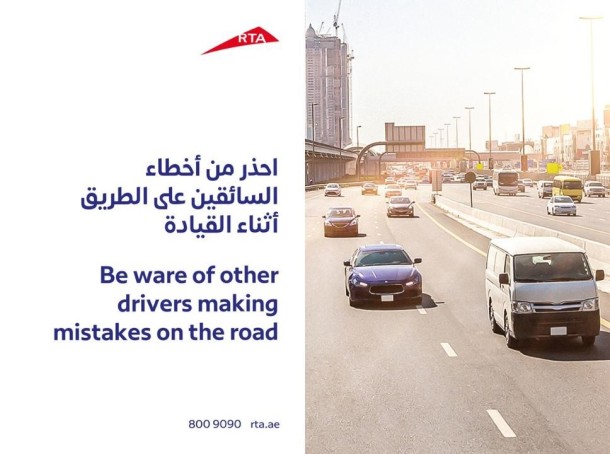
According to international studies, about 95% of road traffic accidents are caused by human error! By becoming good and defensive drivers, we can cut that percentage significantly.
Defensive driving is the combination of mastering the road rules and the basic mechanics of driving and in addition, it’s about reducing the risk of accidents by anticipating dangerous situations, for example the mistakes of other traffic participants or in dangerous conditions, and knowing to react accordingly.
Here are the key ingredients to defensive driving – it’s a summary of some specific topics of road safety which we cover in more detail in other section of our portal:
Allow enough space ahead. Four out of ten accidents involve rear-end collisions, many of which could have been avoided by simply following at a safe distance rather than tailgating. You should allow at least two seconds between your vehicle and the car ahead of you. That gap should be lengthened to three seconds at highway speeds and four or more in rain or other poor weather conditions.
Look ahead. Scan the road and the surrounding area ahead for potential road hazards. Look around on both sides, and keep your eyes open for approaching vehicles, pedestrians, animals or debris that might enter your path.
Adjust for hazards. By slowing down or speeding up only slightly, or by moving to a different lane position, you may avoid a potentially hazardous situation.
Avoid frequent lane changes. Try to maintain a speed near that of the flow of nearby traffic. Remember your lane discipline and keep right unless passing. Remember to check the blind spot before making a lane change, too.
Use lights and signals. Turn your headlights on in dim daylight, rain, or other low-visibility weather conditions, and remember to always use turn signals. For highway driving, we also believe that — when still at a distance – a quick blink of the flash-to-pass feature on your headlights is far safer than the tailgating or the aggressive right-lane passing that often otherwise results. If you’re in town, direct eye contact and gentle gestures might help clear any doubts over who has the right of way.
Keep a proper driving position. Maintain a comfortable, upright driving position, with both hands on the steering wheel in the correct position. This will put you in a better position to make sudden avoidance maneuvers.
Have an escape route. Check your mirrors every few seconds to see what’s beside and behind you. Taking into account the position of the cars around you and the road ahead, decide where you could maneuver safely to avoid an accident. Having an avoidance route is essential. If you don’t — say, if the road is narrow and there’s no shoulder — you need to increase your following distance.
Don’t depend on other drivers. Be considerate of others, but look out for yourself. Don’t assume that another driver is going to move out of the way or allow you to merge. Plan your movements anticipating the worst-case scenario.
Keep your speed down. Remember that the posted speed limit applies to ideal conditions. You’re responsible for decreasing your speed to match the conditions
Wear your seat belt. It’s still the best thing you can do to protect yourself in case the unexpected happens. It’s hard to believe there are still those who don’t buckle up, even though seat belt use rates have never been higher. Children who are under the age of 13 are required to sit in the back seat of the car. Once your child has completely grown out of their forward facing child safety seat which is required to have an internal buckle; you should switch them to a belt positioning booster seat. Children should use belt positioning booster seats until they are about 145cm tall (generally 4-8 years old). Remember wearing your safety belt not only protects you but legally you are required to abide by the laws set out by the RTA.
Cut out distraction. Any time you become preoccupied with distractions, you’re letting your defenses up. As always, minimize your eating, drinking, CD-changing, and cell phone conversations. Save them for when you’re stopped in a safe place. According to textinganddrivingsafety.com a study has shown that the likelihood of an accident occurring is increased by 23 times if the driver is texting or sending messages whilst behind the wheel.
It’s all about the attitude! Although defensive driving includes all of the above considerations, it’s better described as a realization that driving is a privilege that you share with many others, that there are real people in other vehicles — possibly even family, co-workers, or loved ones – and that aggressive, irresponsible driving on your part could put your life and the lives of others in danger. Defend your life.
Sources:
- http://en.wikipedia.org/wiki/Defensive_driving
- http://www.guidetosafedriving.com/Defensive_Driving.html
- http://www.emirates247.com/news/emirates/abu-dhabi-has-a-car-crash-every-4-5-minutes-2010-10-25-1.308528









